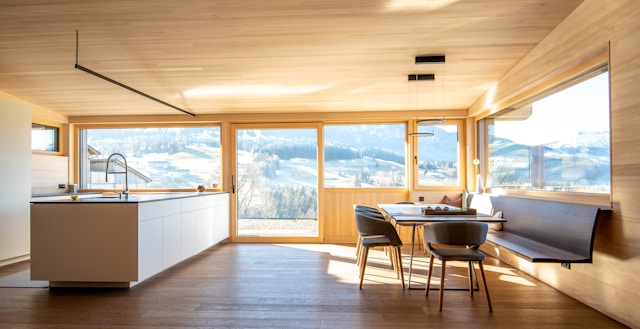All over the world housing crisis is a critical issue that affects millions of people. Finding solutions to this challenging problem has never been more important, with rising property prices, a limited housing supply, and growing environmental concerns. As urbanisation accelerates and climate change gets worse, new approaches to addressing these concerns are required. In this article, we will look at methods to solve housing crisis, with a focus on long-term and cost-effective solutions.
The Scale of the Housing Crisis
It is important to know the extent of the problem. According to the United Nations, about 1.6 billion people globally live in poor housing conditions. According to the National Low Income Housing Coalition, there are only 7 million affordable rental apartments available to extremely low-income renters in the US. This problem is about both number and quality, with many homes lacking basic utilities and resilience to climate-related emergencies.
Embracing Prefabrication and Modular Homes to Solve Housing Crisis/Shortages

One of the most potential solutions to the housing crisis is the use of prefabricated and modular homes. These groundbreaking construction methods offer a quick, cost-effective, and environmentally sustainable way to build a home. Prefabricated homes, such as those from Boxable that are built in a controlled industrial environment can help out. This approach can save building time by up to 50% and labour costs by 30%, all while keeping high quality and durability.
Modular homes, that are constructed by using factory-built elements or “modules,” offer design flexibility and are easily adaptable to a wide range of needs and preferences. According to the National Association of Home Builders, modular homes can be built 30% faster and for 10% to 20% less than traditional site-built homes. Furthermore, modular homes frequently contain energy-saving technologies and sustainable materials, which increase their environmental benefits.
Elon Musk vision to solve home crisis
Elon Musk, the billionaire entrepreneur known for his revolutionary achievements in technology and space research, has decided to live in a $50,000 tiny home. This decision is more than simply a personal one; it represents a larger trend towards minimalist design and sustainable living. Musk’s choice is especially striking given his enormous fortune and the luxury homes that are generally associated with people of his level. His decision to move to a compact, prefabricated home reflects an important change in thinking towards housing and sustainability.
Musk’s choice of a prefabricated tiny home draws attention to this revolutionary housing concept. He lives in a tiny home built by Boxable, a business known for its affordable and sustainable housing solutions. Boxable’s flagship product, the Casita, is a 375-square-foot unit that embodies the ideas of efficiency and durability. Despite its small size, the Casita provides a completely functional living space, including a living area, kitchen, bathroom and bedroom.
The Casita’s design shows advances in prefabricated housing. It is constructed in a factory that significantly decreases the building time and costs. This strategy focusses on one of the most important components of the housing crisis: affordability. With a price tag of roughly $50,000, the Casita provides an affordable alternative to standard housing, making homeownership more accessible to more people.
Musk’s decision has a major impact. As one of the world’s most prominent personalities, Musk’s decisions frequently establish trends and inspire others. His choice of a tiny home emphasises the benefits of minimalist living and sustainable housing options.
Boxable’s approach to housing shows how innovation may help to solve the housing problem. The company’s use of modular construction techniques enables speedy and scalable production. Unlike traditional construction methods, prefabricated homes such as the Casita are manufactured in a controlled factory atmosphere.
Reducing Housing Costs Through Financial Innovation
Financial innovation is essential for improving home affordability. Many people and families find it difficult to become homeowners due to high housing costs. New financial structures and programs may help to address this problem. Shared equity plans, for example, allow individuals to buy a portion of a property and rent the rest. The Urban Institute suggests that shared equity models can reduce purchasers’ financial limitations while increasing homeownership rates by up to 20%.
Encouraging Sustainable Urban Planning for Future-Ready Cities
Sustainable urban planning is essential for reducing the housing issue in developing cities. Effective urban planning involves creating compact, walkable neighbourhoods that have access to public transportation, green spaces, and essential services. Promoting mixed-use development and higher-density housing can reduce the need for prolong commuting while also minimising the environmental impact of urban sprawl.
The World Resources Institute highlights that compact, walkable neighbourhoods can reduce transportation emissions by up to 30% while improving overall quality of life. Designing cities with climate-resilient infrastructure and adding green infrastructure features like parks and green roofs can help to improve urban sustainability. Green roofs, for example, control rainwater while also reducing the urban heat island effect and improving air quality.
Conclusion: Steps to Solve Housing Crisis
The housing problem is a complex issue that requires creative and long-term solutions. We can make significant progress in resolving the housing crisis by embracing prefabricated and modular homes, promoting sustainable building practices, addressing zoning and regulatory challenges, leveraging technology, supporting community-based initiatives, decreasing housing costs through financial innovation, encouraging sustainable urban planning, and fostering collaboration. As we progress, we must remain committed to finding innovative and effective solutions that satisfy communities’ different needs while also contributing to a more sustainable and fair future. By following these steps, we can help to ensure that everyone has access to safe, affordable, and ecologically responsible housing.








